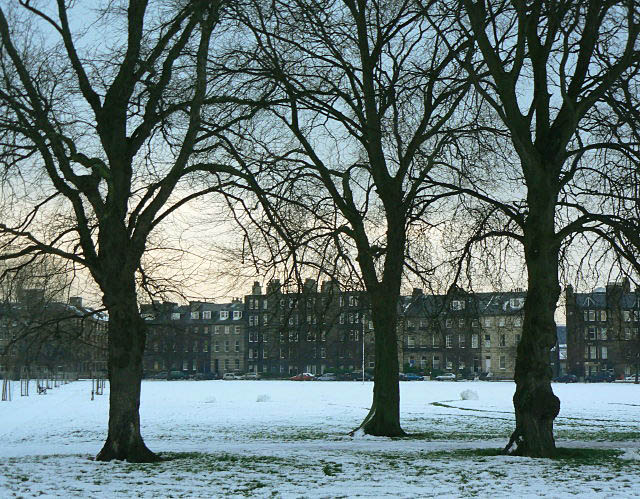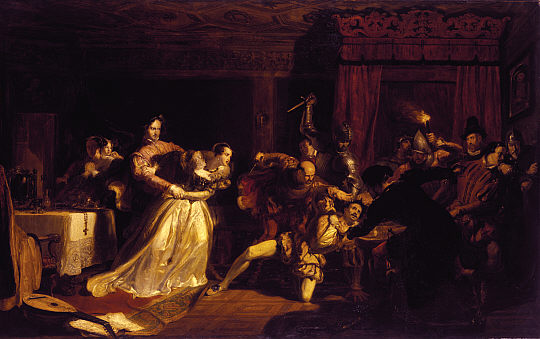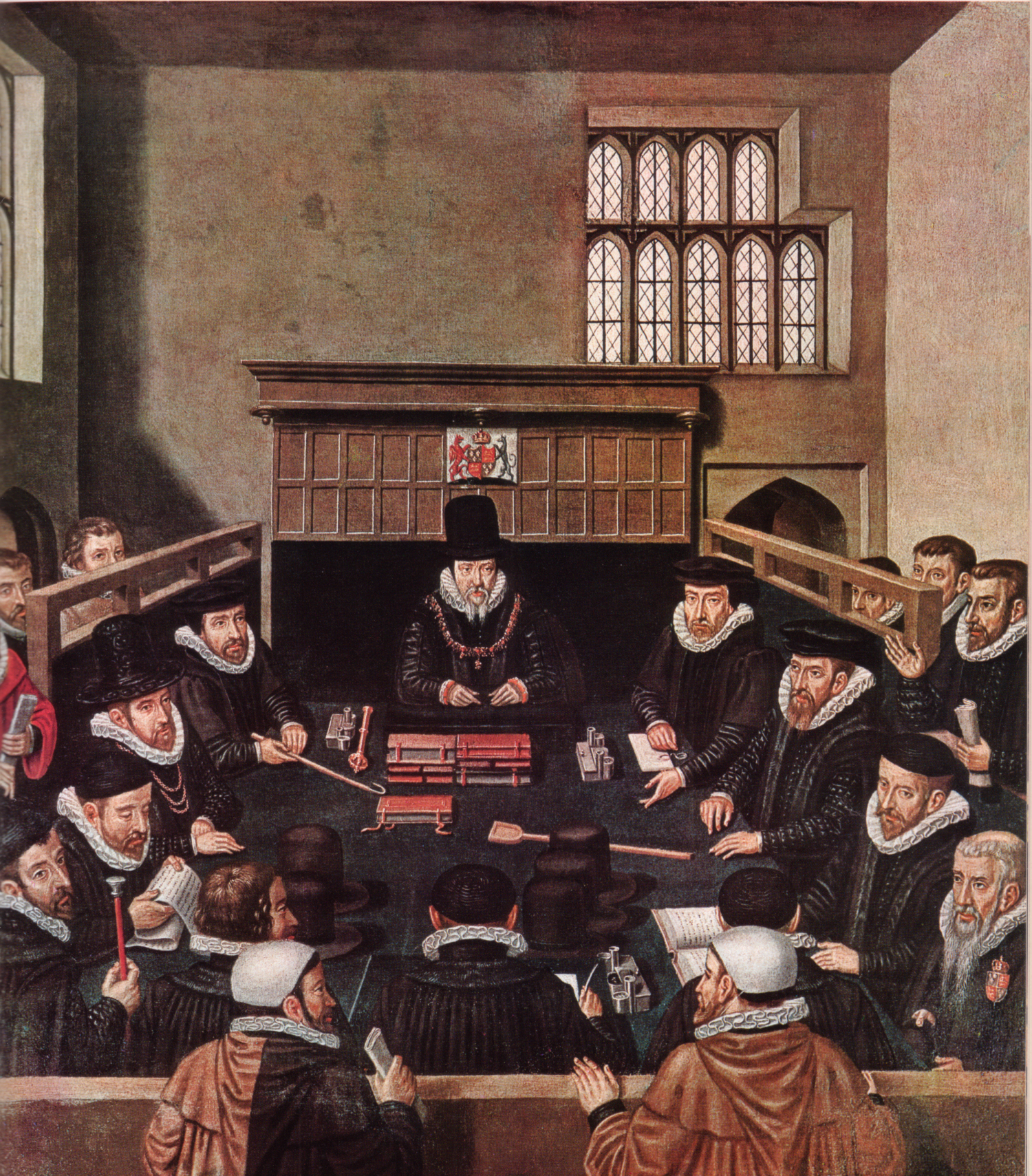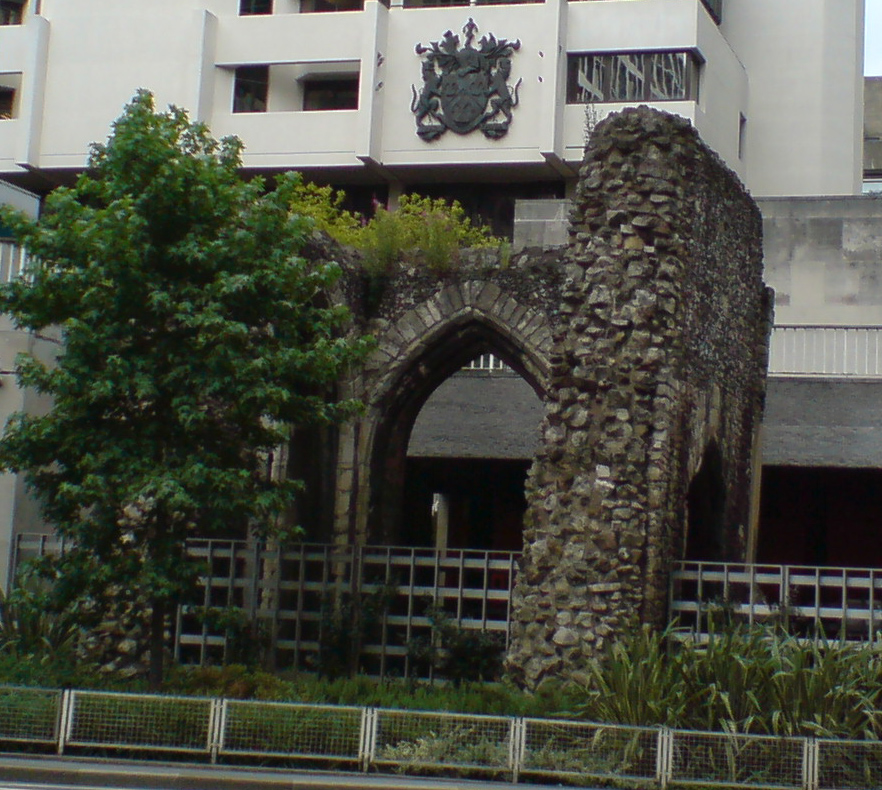|
James Cockie
James Cockie (died 1573) was a goldsmith in Edinburgh. He helped mint coins in Edinburgh Castle during the Marian Civil War and was hanged as a counterfeiter on 3 August 1573. The surname was also spelled "Cokie" and "Cokkie", "Cokke", or "Cok". The family were prominent in Edinburgh as goldsmiths. He was born around 1535, and his father was also called James Cockie. Career James Cockie and James Mosman were made free men of the Edinburgh incorporation of goldsmiths on 1 May 1557. In 1558, he made and engraved a clock case for Mary of Guise (the "making graving of ane horologe of lettone") and also worked in Edinburgh castle casting a cannon called a "double falcon" with the Queen's arms and motto. Cockie married John Arres' daughter. She was a sister of James Mosman's wife – Marion Arres. Through his marriage, Mosman obtained the house on Edinburgh's High Street which is now known as the John Knox House. At the Scottish Reformation, in 1560 Cockie gave evidence to Henri ... [...More Info...] [...Related Items...] OR: [Wikipedia] [Google] [Baidu] |
Edinburgh Castle
Edinburgh Castle is a historic castle in Edinburgh, Scotland. It stands on Castle Rock (Edinburgh), Castle Rock, which has been occupied by humans since at least the Iron Age. There has been a royal castle on the rock since the reign of Malcolm III of Scotland, Malcolm III in the 11th century, and the castle continued to be a royal residence until 1633. From the 15th century, the castle's residential role declined, and by the 17th century it was principally used as a military garrison. Its importance as a part of Scotland's national heritage was recognised increasingly from the early 19th century onwards, and various restoration programmes have been carried out over the past century and a half. Edinburgh Castle has played a prominent role in History of Scotland, Scottish history, and has served variously as a Palace, royal residence, an arsenal, a treasury, a national archives, national archive, a Mints of Scotland, mint, a prison, a military fortress, and the home of the Honou ... [...More Info...] [...Related Items...] OR: [Wikipedia] [Google] [Baidu] |
Articles Of Leith
The Articles of Leith were the terms of truce drawn up between the Protestant Lords of the Congregation and Mary of Guise, Regent of Scotland and signed on 25 July 1559. This negotiation was a step in the conflict that led to the Scottish Reformation. Although its immediate effect was the withdrawal of Protestant forces from Edinburgh, subsequent disputes over the content and observance of the treaty fuelled the crisis in Scotland. The Reformation crisis Following religious riots which began at Perth, the Protestant Lords had taken up arms against Mary of Guise and the French troops that supported her rule in Scotland. The Lords occupied Edinburgh in June 1559, taking Holyroodhouse and seizing the coining equipment from the Scottish Mint. News came that Henry II of France had died, which cheered John Knox who supposed this might halt further French intervention. However, a Catholic army approached from Dunbar, and the Captain of Edinburgh Castle, Lord Erskine, declared for the ... [...More Info...] [...Related Items...] OR: [Wikipedia] [Google] [Baidu] |
Holyrood House
The Palace of Holyroodhouse ( or ), commonly known as Holyrood Palace, is the official residence of the British monarch in Scotland. Located at the bottom of the Royal Mile in Edinburgh, at the opposite end to Edinburgh Castle, Holyrood has served as the principal royal residence in Scotland since the 16th century, and is a setting for state occasions and official entertaining. The palace adjoins Holyrood Abbey, and the gardens are set within Holyrood Park. The King's Gallery was converted from existing buildings at the western entrance to the palace and was opened in 2002 to exhibit works of art from the Royal Collection. King Charles III spends one week in residence at Holyrood at the beginning of summer, where he carries out a range of official engagements and ceremonies. The 16th-century historic apartments of Mary, Queen of Scots, and the State Apartments, used for official and state entertaining, are open to the public throughout the year, except when members of th ... [...More Info...] [...Related Items...] OR: [Wikipedia] [Google] [Baidu] |
Aeneas James George Mackay
Aeneas James George Mackay (3 November 1839 – 10 June 1911) was a Scottish lawyer and academic, known as a legal and historical writer. Life Born at 7 Albyn Place on the Moray Estate in Edinburgh on 3 November 1839 and was son of Mary, daughter of John Kirkcaldy of Baldovie, Forfarshire and Thomas George Mackay, writer to the signet. He was paternal grandson of Aeneas Mackay, a famous Edinburgh lawyer. He was educated at Edinburgh Academy and King's College, London, where he gained distinction in divinity and history. He went on to University College, Oxford, where he graduated BA in 1862, proceeding MA in 1865, and then at Heidelberg University, completing his legal curriculum at the University of Edinburgh, where he was one of the first to obtain the degree of LL.B. Mackay was admitted advocate at the Scottish bar in 1864, and attained repute in consultation. He devoted time to studies in law and history, and in 1874 he succeeded Cosmo Innes as professor of constitutiona ... [...More Info...] [...Related Items...] OR: [Wikipedia] [Google] [Baidu] |
Robert Lindsay Of Pitscottie
Robert Lindsay of Pitscottie (also Lindesay or Lyndsay; c. 1532–1580) was a Scottish chronicler, author of ''The Historie and Chronicles of Scotland, 1436–1565'', the first history of Scotland to be composed in Scots rather than Latin. Biography Of the family of the Lindsays of the Byres, a grandson of Patrick Lindsay, 4th Lord Lindsay, Robert was born at Pitscottie, in the parish of Ceres, Fife, which he held in lease at a later period. His ''Historie'', the only work by which he is remembered, is described as a continuation of that of Hector Boece, translated by John Bellenden. Although it sometimes degenerates into a mere chronicle of short entries, it is not without passages of great picturesqueness. Sir Walter Scott made use of it in his narrative poem '' Marmion''; and, in spite of its inaccuracy in details, it is useful for the social history of the period. Lindesay's share in the ''Historie'' was generally supposed to end with 1565; but Dr Aeneas Mackay c ... [...More Info...] [...Related Items...] OR: [Wikipedia] [Google] [Baidu] |
William Cecil, 1st Baron Burghley
William Cecil, 1st Baron Burghley (13 September 15204 August 1598), was an English statesman, the chief adviser of Elizabeth I, Queen Elizabeth I for most of her reign, twice Secretary of State (England), Secretary of State (1550–1553 and 1558–1572) and Lord High Treasurer from 1572. In his description in the Encyclopædia Britannica Eleventh Edition, ''Encyclopædia Britannica'' Eleventh Edition, Albert Pollard, A.F. Pollard wrote, "From 1558 for forty years the biography of Cecil is almost indistinguishable from that of Elizabeth and from the history of England." Cecil set as the main goal of English policy the creation of a united and Protestant British Isles. His methods were to complete the control of Ireland, and to forge an alliance with Scotland. Protection from invasion required a powerful Royal Navy. While he was not fully successful, his successors agreed with his goals. In 1587, Cecil persuaded the Queen to order the Execution of Mary, Queen of Scots, executio ... [...More Info...] [...Related Items...] OR: [Wikipedia] [Google] [Baidu] |
William Drury
Sir William Drury (2 October 152713 October 1579) was an English statesman and soldier. Family William Drury, born at Hawstead in Suffolk on 2 October 1527, was the third son of Sir Robert Drury (c. 1503–1577) of Hedgerley, Buckinghamshire, and Elizabeth Brudenell, of Chalfont St Peter, Buckinghamshire. He was the grandson of another Sir Robert Drury (c. 1456–2 March 1535), Speaker of the House of Commons in 1495. He was a brother of Sir Robert Drury (1525–1593) and Sir Drue Drury (1531/2–1617). Career Drury was educated at Gonville College, Cambridge. Fighting in France, Drury was taken prisoner in 1544; then after his release, he helped Lord Russell, afterwards Earl of Bedford, to quell a rising in Devonshire in 1549, but he did not come to the front until the reign of Elizabeth I. In 1554 he sat as Member of Parliament for Chipping Wycombe. Berwick and Scotland In 1559, he was sent to Edinburgh to report on the condition of Scottish politics, and five ... [...More Info...] [...Related Items...] OR: [Wikipedia] [Google] [Baidu] |
Merk (coin)
The merk () is a long-obsolete Scottish silver coin. Originally the same word as a money mark of silver, the merk was in circulation at the end of the 16th century and in the 17th century. It was originally valued at 13 shillings 4 pence (exactly of a pound Scots, or about one shilling sterling), later raised to 14''s.'' Scots. Varieties In addition to the merks, coins issued include the four merk worth 56''s.'' or £2/16/-; the half merk (or noble), worth 6/8 or 80 pence; the quarter merk, 3/4 or 40''d.''; the eighth-thistle merk, worth 1/8 or 20''d.'' Issues and historical context The first issue weighed and was 50% silver and 50% base metals,. thus it contained of pure silver. "Markland", or "Merkland", was used to describe an amount of land in Scottish deeds and legal papers. It was based upon a common valuation of the land. During the "Lang Siege" of Edinburgh Castle in 1572, the last phase of the Marian civil war, the goldsmith James Cockie minted half merks in the ... [...More Info...] [...Related Items...] OR: [Wikipedia] [Google] [Baidu] |
Michael Lynch (historian)
Michael Lynch, FRHistS, FRSE, FSA Scot (born 15 June 1946) is a retired Scottish historian and a leading expert in the history of the Scottish Reformation and pre-modern urbanisation in the Scottish kingdom. In 2010, five years after his retirement, he was described by one reviewer as 'one of the most influential historians in Scotland of the last thirty years', whose work has been characterised by an 'ability to bring ecclesiastical, cultural and urban perspectives to traditional Scottish political and governmental histories', as well as the ability 'to clarify a difficult theory within a deceptively simple phrase'. Lynch was born in Aberdeen.Biographical details in this paragraph summarise Lynch's entry in Frost's Scottish Who's Who He was educated at Aberdeen Grammar School before taking degrees at the University of Aberdeen and the University of London. His first academic post was a lectureship in the history department at University College, Bangor (now Bangor University) ... [...More Info...] [...Related Items...] OR: [Wikipedia] [Google] [Baidu] |
Thomas Thomson (advocate)
Thomas Thomson Fellow of the Royal Society of Edinburgh, FRSE FSA Scot (10 November 1768 – 2 October 1852) was a Scottish advocate, antiquarian and archivist who served as Principal Clerk of Session (1828–1852) and as secretary of the literary section of the Royal Society of Edinburgh (1812–20). Life Thomas Thomson was born in Dailly manse on 10 November 1768, the eldest son of Rev Thomas Thomson, minister of Dailly in Ayrshire, and his second wife, Mary, daughter of Francis Hay. John Thomson of Duddingston, John Thomson was a younger brother. After attending the parish school of Dailly, he entered the University of Glasgow at age 13, where he graduated with an MA on 27 April 1789. He attended classes in theology and law at the University of Edinburgh from 1789 to 1791. He passed the Scottish bar as an advocate on 10 December 1793. His early Edinburgh address was 19 North Castle Street. Here he was a neighbour and close friend to Walter Scott, at that time also a fellow a ... [...More Info...] [...Related Items...] OR: [Wikipedia] [Google] [Baidu] |
Dalkeith Palace
Dalkeith Palace is a country house in Dalkeith, Midlothian, Scotland. It was the seat of the Duke of Buccleuch, Dukes of Buccleuch from 1642 until 1914, and is owned by the Buccleuch Living Heritage Trust. The present palace was built 1701–1711 on the site of the medieval Dalkeith Castle, and was latterly renamed Dalkeith House. History The medieval castle Dalkeith Castle was located to the north east of Dalkeith and dated from the 12th century when it was in the possession of the Clan Graham, Lords of Dalkeith. With the death of John de Graham in 1341–1342 the castle and the barony of Dalkeith passed to the Clan Douglas via his sister, Marjory, who was married to Sir William Douglas. James Douglas of Dalkeith became the Earl of Morton in the mid 15th century. The castle was strategically located in an easily defensible position above a bend in the River Esk, Lothian, River North Esk. Nearer the centre of Dalkeith, James Douglas, 1st Lord Dalkeith, endowed the collegiat ... [...More Info...] [...Related Items...] OR: [Wikipedia] [Google] [Baidu] |
Jewels Of Mary, Queen Of Scots
The jewels of Mary, Queen of Scots (1542–1587) are mainly known through the evidence of inventories held by the National Records of Scotland. She was bought jewels during her childhood in France, adding to those she inherited. She gave gifts of jewels to her friends and to reward diplomats. When she abdicated and went to England many of the jewels she left behind in Scotland were sold or pledged for loans, first by her enemies and later by her allies. Mary continued to buy new jewels, some from France, and use them to reward her supporters. In Scotland her remaining jewels were worn by her son James VI and his favourites. French fashion and the Scottish queen Mary, Queen of Scots inherited Jewels of James V of Scotland, personal jewels belonging to her father, James V. For a time, the Regent Arran, Earl of Arran was ruler of Scotland as regent. In 1556, after her mother Mary of Guise had become regent, Arran returned a large consignment of royal jewels to the young queen in Fran ... [...More Info...] [...Related Items...] OR: [Wikipedia] [Google] [Baidu] |










